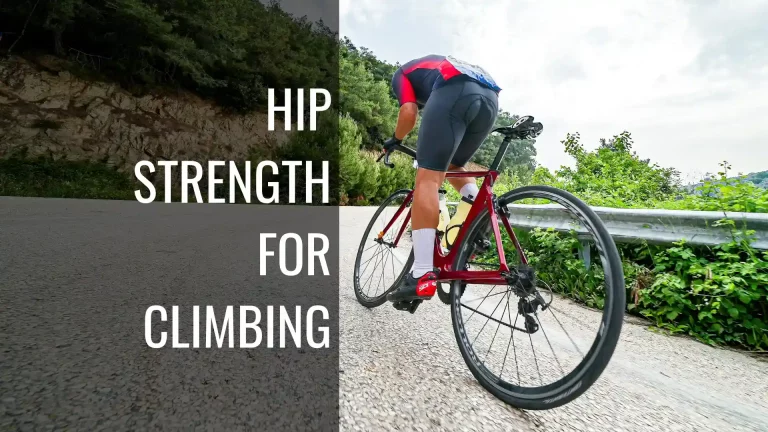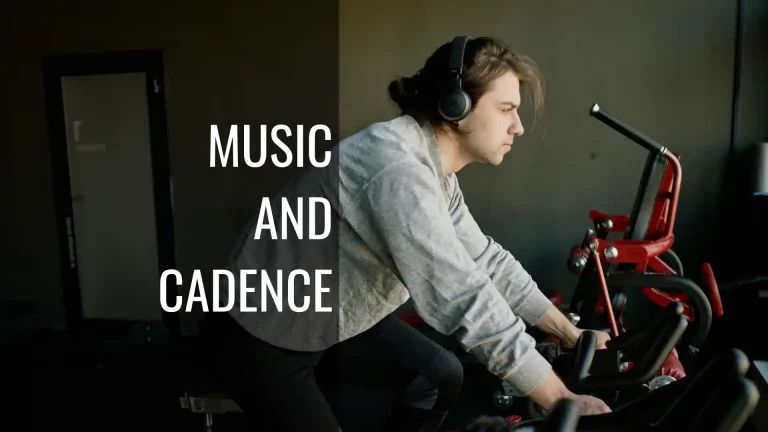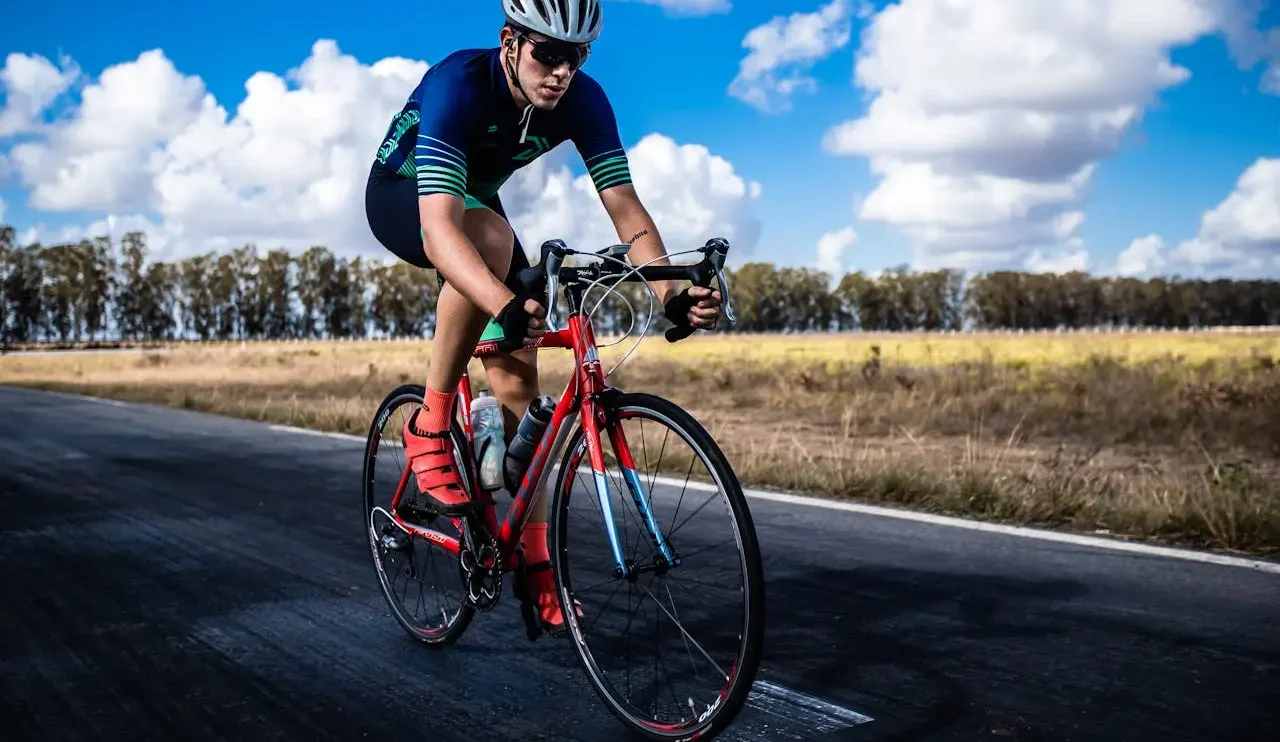
Achieving the perfect bike fit is a crucial element for every cyclist, whether you’re a casual rider or a competitive athlete. Not only does a well-fitted bike enhance your comfort and prevent injury, but it also allows you to ride more efficiently, increasing both your performance and enjoyment on the road or trail. In this blog post, we’ll delve into the process of finding the right bike fit, exploring key factors such as frame size, saddle height, handlebar position, and cleat alignment. By understanding these critical components and their impact on your riding experience, you’ll be well-equipped to optimize your bike fit and unleash your full potential on two wheels.
Table of Contents
What Are the Important Factors in Fitting a Bike?
When fitting a bike, several crucial factors come into play to ensure comfort, efficiency, and safety. Here are some of the key considerations:
Frame Size: The foundation of a proper bike fit starts with selecting the right frame size. A frame that’s too large or too small can lead to discomfort and inefficient riding. Factors like inseam measurement and torso length are taken into account to determine the appropriate frame size.
Saddle Height and Position: The saddle height affects leg extension and pedaling efficiency. Adjusting the saddle height so that your leg is almost fully extended at the bottom of the pedal stroke helps optimize power output while preventing strain on the knees. Additionally, the fore-aft position of the saddle influences comfort and pedaling dynamics, ensuring proper weight distribution between the saddle and handlebars.
- Saddle Fore/Aft Position: Adjusting the saddle’s fore/aft position can help align your knees with the pedal axle, improving pedaling efficiency and reducing stress on your joints.
Handlebar Reach and Width: The handlebar position plays a crucial role in rider comfort and control. Proper reach ensures that your arms are neither stretched too far nor cramped, promoting a relaxed riding posture. Handlebar width should also match your shoulder width for optimal comfort and control. A comfortable bend in your elbows and helps distribute your weight evenly between the saddle and handlebar.
Stem Length and Angle: The stem connects the handlebars to the fork’s steerer tube and influences the bike’s handling characteristics. Adjusting stem length and angle can fine-tune the bike’s fit, catering to individual preferences and riding styles.
Crank Length: The length of the crank arms affects pedaling biomechanics. Choosing the right crank length based on factors like leg length and riding style helps optimize pedaling efficiency and reduce the risk of overuse injuries.
Foot Position and Cleat Alignment: Proper foot positioning and cleat alignment are crucial for efficient power transfer and knee alignment. Ensuring that your feet are properly positioned on the pedals and that cleats are aligned correctly can prevent discomfort and injury while improving pedaling efficiency.
- Pedal and Shoe System: Choosing the right pedals and cycling shoes is crucial for comfort and efficiency. Different systems, such as road or mountain bike pedals, may be better suited for your riding style and preferences.
Stack and Reach: Stack and reach measurements provide valuable insights into the bike’s geometry and how it relates to your body proportions. These measurements help determine the appropriate frame size and cockpit dimensions for a comfortable and balanced riding position.
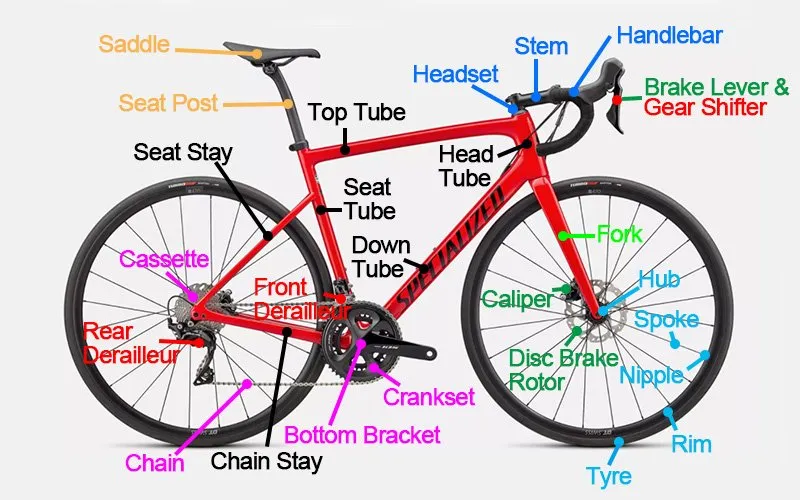
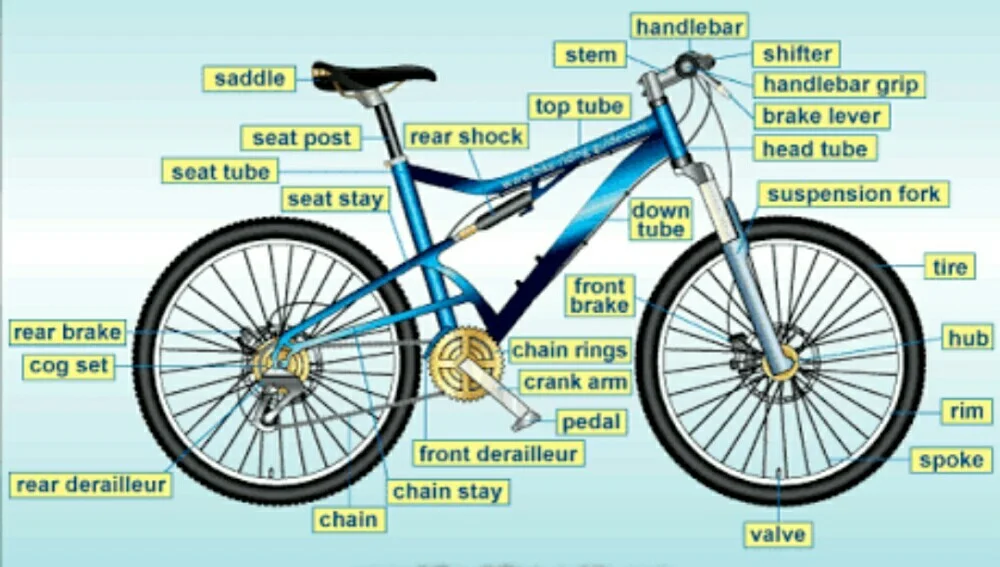
By considering these important factors and fine-tuning the bike’s fit, cyclists can enjoy a more comfortable, efficient, and enjoyable riding experience while minimizing the risk of discomfort and injury.
Find Your Bike Size
The Different Styles of Frame?
- Road Bike Frames: These frames are designed for speed and efficiency on paved surfaces. They typically feature a lightweight design, drop handlebars, and a more aggressive geometry with a longer reach and lower stack height that puts the rider in a forward-leaning, aerodynamic position.
- Mountain Bike Frames: Mountain bike frames are built for off-road riding, featuring wider tires and a more upright riding position for better control on rough terrain. The frames are built to withstand rugged terrain and off-road trails. They feature durable construction, suspension systems (either front suspension, full suspension, or rigid), and wider tires with aggressive tread patterns for enhanced traction. Mountain bike frames come in various styles, including hardtail (front suspension only) and full suspension, catering to different riding preferences and terrain types. There are different types of mountain bike frames, such as cross-country (XC), trail, enduro, and downhill, each tailored for specific riding styles and terrains.
- Gravel Bike Frames: Gravel bike are designed for adventure riding and tackling unpaved roads, gravel paths, and mixed terrain. So the gravel bike frames combine elements of road and mountain bike frames, offering a versatile platform for mixed-terrain riding. They typically have wider tire clearance, a more relaxed geometry than road bikes, and features such as mudguard and rack mounts for long-distance adventures.
- Hybrid Bike Frames: Hybrid frames blend the characteristics of road and mountain bikes, providing a comfortable, upright riding position for recreational cycling, commuting, and light off-road use. They often come with flat handlebars, medium-width tires for added stability, and mounting points for racks and fenders. Hybrid bikes are designed to provide comfort and versatility for riders seeking a balance between speed and durability.
- City and Commuter Bike Frames: Designed specifically for urban environments, these frames emphasize comfort and practicality, with features like step-through frames, integrated lighting, and luggage-carrying capabilities.
- Touring Bike Frames: Built for long-distance touring and bike-packing, these frames prioritize comfort, stability, and load-carrying capacity. They often feature a more relaxed geometry, robust construction, and mounts for racks, fenders, and extra water bottles.
- Cyclocross Bike Frames: Cyclocross frames are purpose-built for racing on mixed terrain, featuring a lightweight design, aggressive geometry, and tire clearance for knobby tires. They are similar to road bikes but with a higher bottom bracket for better clearance over obstacles.
- BMX Bike Frames: BMX bike frames are designed for freestyle, racing, and stunt riding, with compact frames, high-tensile steel construction, and reinforced components. They come in various styles, including race, park, street, and dirt, each optimized for different riding disciplines and skill levels.
When Does it Make Sense to Buy a Bigger Bike?
Buying a bigger bike can make sense in several scenarios, depending on individual preferences, riding goals, and physical attributes. Here are some situations where opting for a larger bike may be advantageous:
- Growth: For young riders, especially children and teenagers, purchasing a slightly larger bike can accommodate growth spurts and prolong the lifespan of the bike. A bike with room to grow ensures that the rider won’t outgrow it too quickly, saving on the need for frequent upgrades.
- Comfort: Riders who prioritize comfort may prefer a slightly larger bike, as it allows for a more relaxed riding position with less cramped geometry. A larger frame size can provide additional space for adjustment, allowing riders to fine-tune their fit for optimal comfort over long rides.
- If you’re in-between sizes: If you find yourself between two bike sizes, opting for the larger size might be a better choice, especially if you have a longer torso or arms. In such cases, adjustments like a shorter stem or a setback seatpost can help fine-tune the fit.
- Long-Term Riding: For cyclists planning to embark on extended tours, bike-packing adventures, or long-distance rides, a larger bike offers extra stability and comfort, particularly when carrying gear or riding for extended periods. A larger frame provides a more stable platform for handling heavy loads and offers a smoother ride over rough terrain.
- Body Proportions: Individuals with longer limbs or a taller torso may find that a larger bike accommodates their body proportions more effectively. A larger frame size can provide a better fit, allowing for proper leg extension and torso reach without feeling cramped or stretched.
- Desired Riding Style: Riders who prefer a more stretched-out, aggressive riding position may opt for a larger bike to achieve the desired geometry. A longer reach and lower stack height, often associated with larger frame sizes, promote an aerodynamic riding posture suitable for racing, fast-paced riding, or aggressive cycling disciplines.
- Customization: Some cyclists prefer the flexibility to customize their bike setup with longer stems, wider handlebars, or other components that require additional space. Choosing a larger bike provides more room for customization without compromising comfort or handling.
- Terrain Considerations: For off-road riding, especially on technical trails or steep descents, a larger bike offers better stability and control, particularly at higher speeds. A larger frame size can provide a more confident ride, allowing cyclists to tackle challenging terrain with greater ease and confidence.
Keep in mind that bike sizing can vary between brands and models, so it’s always a good idea to consult a bike fit specialist or test ride different sizes before making a decision. A properly fitted bike will not only enhance your comfort and performance but also reduce the risk of injury.
How Bike Fittting and Safety Connect
- Proper Riding Position: A well-fitted bike ensures that the rider is in an optimal position while cycling. This includes proper saddle height and fore-aft position, handlebar reach, and overall geometry alignment. A good bike fit ensures that your body is correctly positioned on the bike, allowing for optimal control, balance, and handling. This is especially important when navigating challenging terrain or when riding at high speeds.
- Discomfort/ Injury Prevention: An improperly fitted bike can lead to discomfort, pain, and even long-term injury. For example, a saddle that’s too high can cause knee pain, while a frame that’s too large can make it difficult to reach the handlebars, compromising control and increasing the risk of accidents. By aligning the bike’s components with the rider’s body proportions and biomechanics, bike fitting minimizes stress on joints, muscles, and tendons. Reduced strain and discomfort translate to a more enjoyable riding experience and decreased risk of injury due to repetitive motion or poor posture.
- Improved Visibility: A well-fitted bike allows you to maintain an upright posture, improving your visibility of the road or trail ahead and making it easier to spot potential hazards. This may involve positioning the rider in a more upright posture to increase visibility to motorists and other cyclists, or adjusting handlebar and mirror placement for better peripheral vision. Increased visibility and awareness are essential for anticipating and avoiding potential hazards, thereby enhancing overall safety while cycling. This is especially important on trails with roots and rocks, where a crash can be very dangerous.
- Comfort and Endurance: A comfortable bike fit can reduce fatigue and discomfort during long rides, enabling you to maintain focus and control throughout your ride.
- Bike Handling: Proper bike fitting enhances handling and control, especially in challenging riding conditions such as steep descents, technical trails, or adverse weather. A well-fitted bike allows the rider to maintain a stable and balanced position, react quickly to obstacles or hazards, and navigate corners with confidence. Improved handling contributes to safer riding outcomes by reducing the likelihood of accidents or collisions.
- Shoe and Pedal System: Properly fitted cycling shoes and pedals ensure that your feet are securely attached to the bike, reducing the risk of slipping or losing control, especially when riding at high speeds or over rough surfaces.
- Reach and Control: An appropriately sized frame and properly adjusted handlebars enable you to comfortably reach and control the brakes, shifters, and other components, ensuring you can react quickly to changing conditions on the road or trail.
- Prevention of Overuse Injuries: Overuse injuries, such as tendonitis, knee pain, and lower back discomfort, can result from improper bike fit. By aligning the bike’s geometry with the rider’s body mechanics, bike fitting helps distribute pressure evenly and minimize repetitive stress on vulnerable areas. Preventing overuse injuries through proper bike fitting contributes to long-term cycling enjoyment and safety.
- Proper Bike Fit for Child Safety: For children, proper bike fitting is crucial for their safety and confidence while riding. A bike that is too large or too small can be difficult to control and may increase the risk of accidents or falls. Ensuring that a child’s bike is appropriately sized and adjusted for their height and skill level promotes safe riding habits from a young age.
To You Happy Cycling Future
Finding the right bike fit is not just about comfort and performance—it’s about creating a safe and enjoyable riding experience that encourages you to explore new horizons and push your limits. Whether you’re a seasoned cyclist or just starting your journey on two wheels, investing time and effort into achieving the perfect bike fit is well worth it. By considering factors such as frame size, saddle height, handlebar position, and shoe and pedal systems, you can create a tailored cycling experience that maximizes your potential on the road or trail.
Remember, it’s not just about matching numbers and measurements; it’s about finding harmony between you and your bike, where every pedal stroke feels effortless and every ride leaves you exhilarated.
So, take the time to fine-tune your fit, listen to your body, and enjoy the incredible adventure that awaits you on the open road or trail. Happy riding!
I hope you found this informative. Check out my other posts on cycling such as tips to get the best bike fit for women and Tips for choosing a Gravel Bike. We also recorded a related podcast on injuries and prevention.

